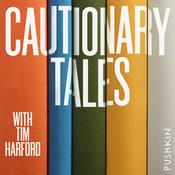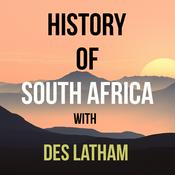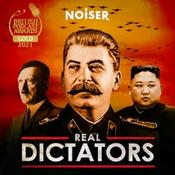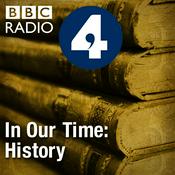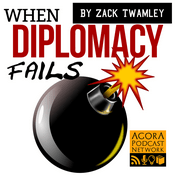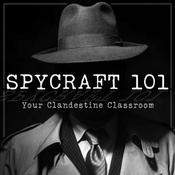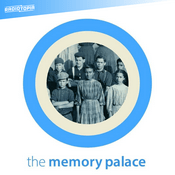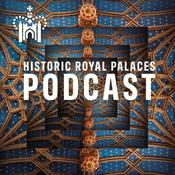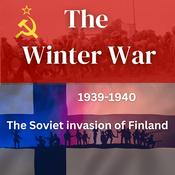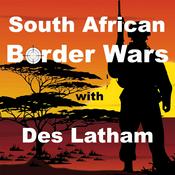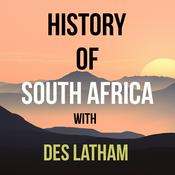21 episodes

Episode 21 – The war "between two bald men fighting over a comb" ends
2022/7/24 | 21 mins.
The British had taken most of the hills overlooking Port Stanley by the morning of 14th June 1982 – and 2 Para had been ordered to halt on their position on Wireless Ridge. They were waiting for the SAS and the Royal Marines who were raiding from the north of Cortley Hill Ridge, a long narrow piece of land running from Moody Brook to the northern arm of Stanley harbour. That opeation was more of a hindrance than a help to 2 Para because the SAS run into trouble and had to be supported by the artillery that had been clearing the ground for the paras. Cortley Hill ridge was manned by the Argentinian B Battery of the 101st anti-aircraft regiment. They had eight Hispano-Suiza 30mm guns and a few 12.7mm machine guns which had been used against aircraft, but now Brigadier Jofre ordered them to swivel horizontally to provide ground defence. He’d also moved a few mortars into the position along with a Marine infantry platoon to back them up. The SAS raiding party was heading their way but were forced to paddle past the Argentinian hospital ship Almirante Irizar. A member of the ship’s crew was as commando-trained soldier and without thinking about the Geneva convention and rules of war, grabbed a radio and called the anti-aircraft battery on the hill – warning of the SAS raid. Subsequently the SAS raiding party was driven off with three wounded and boats damaged. Argentina still claims the Malvinas. The British at some point will have to reassess their ownership based on the kelpers self-determination. This series was scripted in 2022, and as I sit here, the United Nations is revisiting the whole idea of who owns the wind-swept islands. This is a complex matter because the UN General Assembly is muttering about colonialism which is what London is accused of perpetuating. The conscripts and professional soldiers on both sides remember this war like it was yesterday – some of the Argentinians want their ashes scattered on places like Mount Kent when they die. Hundreds of British servicemen still suffer the physical and mental scars. The people of the islands want to run their own show, like a woman who told one Argentinian that she was 40 but looked 60 because of how tough it was to live on these islands. “We feel that the country belongs to us, not to England, not to Argentina.. life is very hard.. nobody has ever cared about us…”Which you can say if you’ve followed this story – is true. They only began caring when geopolitical issues came to the fore and in the future, both sets of countries may find these people much harder to deal with than they were in 1982. Hosted on Acast. See acast.com/privacy for more information.

Episode 20 – The bloody battles for Longdon and Tumbledown
2022/7/18 | 20 mins.
We heard how the assault of Two Sisters and Mount Harriet went last episode, both were taken within 2 and a half hours – but 3 Paras attack on Mount Longdon was a different proposition. It’s a steep sided hill about a mile long running almost west to east, it’s main ridge above 600 feet in places and overall, about 300 feet on average above the surrounding ground. This hill formed only a small part of the Argentinian 7th Regiment and its commander Lieutenant Colonel Ortiz Gimenez overlooked the sector named Plata – or silver. It stretched from Mount Longdon eastwards as the northern Arm of Stanley Harbour nearly seven miles away. The Argentinians did not build deep defences here, and 7th Regiment was stretched along its ridge. The Summit of Mount Longdon was held by only one company – Bravo – with three platoons – but behind them was another platoon of the 10th Engineer Company which was fighting as infantry. There were also eight heavy 12.7mm machine guns manned by marines. The British later claimed there were commandos amongst the Regiment, but this is wrong. So 3 Para moved quickly to the rising ground, when a corporal of 3 Company stepped on a mine. It shattered his leg but he survived, while the Argentinians realised they were being attacked and opened fire. 3 Para had expected to find a single company protecting Longdon, but as we heard there were four.The first troops in action on the 13th were 30 men of the headquarters company of the Scots Guards, commanded by Major Richard Bethell. He was a 32 year-old former SAS officer, and looking forward to the action. His role was to create a diversionary attack along with the Blues and the Royals, south east of Mount Harriet. Bethell had already survived a mine blast after his land rover triggered one on a road during the previous days patrols. They advanced in the dark towards Tumbledown. It is a rocky ridge about a mile and a half long but very narrow, and 750 feet high at its most prominent point. It dominated the area of open ground and was the key to unlocking Stanley – and probably the end of the war. Hosted on Acast. See acast.com/privacy for more information.

Episode 19 – The Battle to take Stanley begins as the British begin their assault on the hills overlooking the port
2022/7/11 | 26 mins.
We pick up after the sinking of the Galahad and the debacle at Fitzroy and Bluff Cove. The British war cabinet was plunged into an argument over information. New Brigade commander Moore had panicked and sent a message that he’d lost 900 men – we know it was 51. The Argentinians naturally believed the 900 figure and also thought that the British attack had been stunted.It hadn’t, but London ironically gained as it lost. The Ministry of Defence faced the media and responded that the casualties had been heavy and that this may delay an attack on Stanley. The war cabinet was under extreme pressure to make the casualty list public, but they were refusing. It would only be released after the end of the war, further confusing the Argentinian military who wanted to believe that the English would not finally retake the Falklands. As Margaret Thatcher’s ministers sweated under the glare of public opinion, it was fortunate for this government that the Falkland’s War was so brief. The graphic pictures reaching the British public had shocked the nation, one in particular of a sailor on a stretcher with a bloody stump where his leg had been blown off.The Navy had always been against reporters embedded amongst them, now they conducted a mini told you so campaign. And yet, the pictures helped the British public understand the difficulties of the campaign, and their support increased instead of waning. However, the attempt at opening up another front for 5 Brigade instead of focusing on the main job at hand – to take Stanley – was a mistake. Apologists for the British army point out that it could have been worse, which is rather monty pythonesque – and no solace to the families of the 51 men whose lives were thrown away, nor the shoddy communication that bedevilled the British Falklands campaign. Brigadier Thompson’s 3 Brigade was lining up to deal with Stanley, and in the end, 5 Brigade’s involvement slowed things down. The political future of a vast area of the South Atlantic was going to be decided on the outcome of a series of battles on hills with innocuous sounding names like Mount Longdon, Two Sisters, Tumbledown, Wireless Ridge, Mount William, Sapper Hill. Hosted on Acast. See acast.com/privacy for more information.

Episode 18 – Fifty-one British die as the Galahad, Plymouth and Foxtrot 4 are pulverised by the Argentinian air force
2022/7/03 | 29 mins.
It was 30th May and the rusty liner the Canberra headed back into San Carlos water. On board were reinforcements from the 5th Infantry Brigade including the Gurkhas, the Scots and Welsh Guards. They had been collected from the QE2 liner which had docked at South Georgia with the Guards and the Gurkhas, from where they were collected by the Canberra. Also on board was the new commander, Major-General Jeremy Moore who was to take over from Brigadier Jeremy Thompson. The command post at San Carlos was the outside lavatory and cloakroom for the Port San Carlos Social Club in better times – and Moore surveyed his new HQ then headed out to talk to the troops. The lack of Sea King helicopters meant the British forces were back on their transport equipment number ones, their boots. It was 3 Commando’s Brigades’ fate to continue to march across East Falkland, towards the chain of hills surrounding port Stanley. 45 commando had left San Carlos with 3 Para on the 27th May, and were plodding doggedly over the hills, marshes and streams towards Douglas settlement. That night, at ten pm, they collapsed into sleep after the 13 mile route march, across terrain that left 15 men injured – sprained ankles, pulled muscles, cracked bones. Meanwhile, Brigadier Thompson was worried. He knew that Mount Kent was strategically important and wanted it populated by British troops before the Argentinians woke up to its crucial role – should they send artillery spotters here the British would be vulnerable to observed artillery fire. For the next week, the Royal Navy devoted most of its attention to the problems of the 5 Brigade. On the afternoon of 3 June, the Welsh Guards began their long march to Goose Green from San Carlos, walking for 12 hours before the whole exercise was abandoned. The Guardsmen were not ready for this heavy going, and they were too heavily laden – and their snotracs broke down every few miles. Back they marched over Sussex Mountain. 3 Brigade sneered at the news – what a contemptable start they thought. Remember they were on the hills above Stanley, and now forced to hang around the freezing mountain waiting for 5 Brigade to get its act together. It was now that the fate of so many men was decided – the only other way for these soldiers to get to Fitzroy at speed was by sea – and to a scene of a tragedy that would be the worst loss of life in any single engagement for the British during the entire Falklands War. Hosted on Acast. See acast.com/privacy for more information.

Episode 17 – The bloody May 1982 battle for Darwin and Goose Green
2022/6/27 | 26 mins.
The night of 27th May 1982 was cold and rainy, and waiting for the British on the mile-wide isthmus to the north of the settlements of Darwin and Goose Green were one hundred Argentinian conscripts making up two platoons of 12 Regiment A company, a dozen or so Argentinian reconnaissance soldiers, First Lieutenant Jorge Manresa, three officers and 14 NCOs. Manresa’s men weren’t in a good place. They were part of the extension of the defensive position ordered by their commander back in Stanley and it was no where nearly as well laid out as the second line of defence behind them. They had a 120mm mortar with its tube welded to its base plate, two other 81mm mortars and two 7.62mm machine guns. The newly dug positions were about a mile and half ahead of the much better constructed main line. At 6pm on the 27th, the British 2 battalion Charlie company began to advance towards the start line in intermittent rain. For the next three hours they probed down the track, led by engineers of 59 squadron who faced the biggest hazards initially – being blown up by mines and boobytraps. They waded waist-deep in streams in the darkness to ensure that the three bridges between Camilla Creek and the start line were clear of mines, then lay shivering in the dark as the assault companies headed their way.At 2.35am A Company crossed the start line in a classic infantry formation, two platoons forward and one behind. At 2:35am HMS Arrow opened fire, firing a total of 22 star shells and 135 rounds of 4.5" high-explosive shells during a 90-minute bombardment, signalling the start of the attack. The rest of the battalion moved off at 10pm, listening to the crump crump of naval gunfire support.Still, it took a firefight until first light before the first line was broken, and the British were still two miles short of the Goose Green Settlement – they’d just arrived at Darwin. But that is further north of Goose Green, about a mile and a half away and both were located on the east side of the isthmus, the right as you look at the map. Then dawn broke, and the battle began to swing away from the British. They were caught in the open, on gently sloping ground, with the only shelter being little contours in the landscape and a ridge that was a great target. Hosted on Acast. See acast.com/privacy for more information.
More History podcasts
Trending History podcasts
About The Falklands War
Listen to The Falklands War, Empire and many other podcasts from around the world with the radio.net app

Get the free radio.net app
- Stations and podcasts to bookmark
- Stream via Wi-Fi or Bluetooth
- Supports Carplay & Android Auto
- Many other app features
Get the free radio.net app
- Stations and podcasts to bookmark
- Stream via Wi-Fi or Bluetooth
- Supports Carplay & Android Auto
- Many other app features
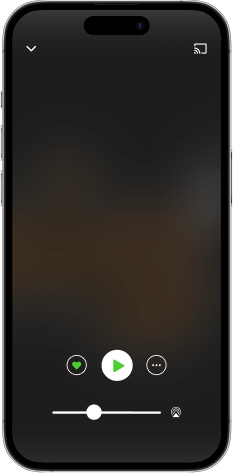

The Falklands War
download the app,
start listening.

